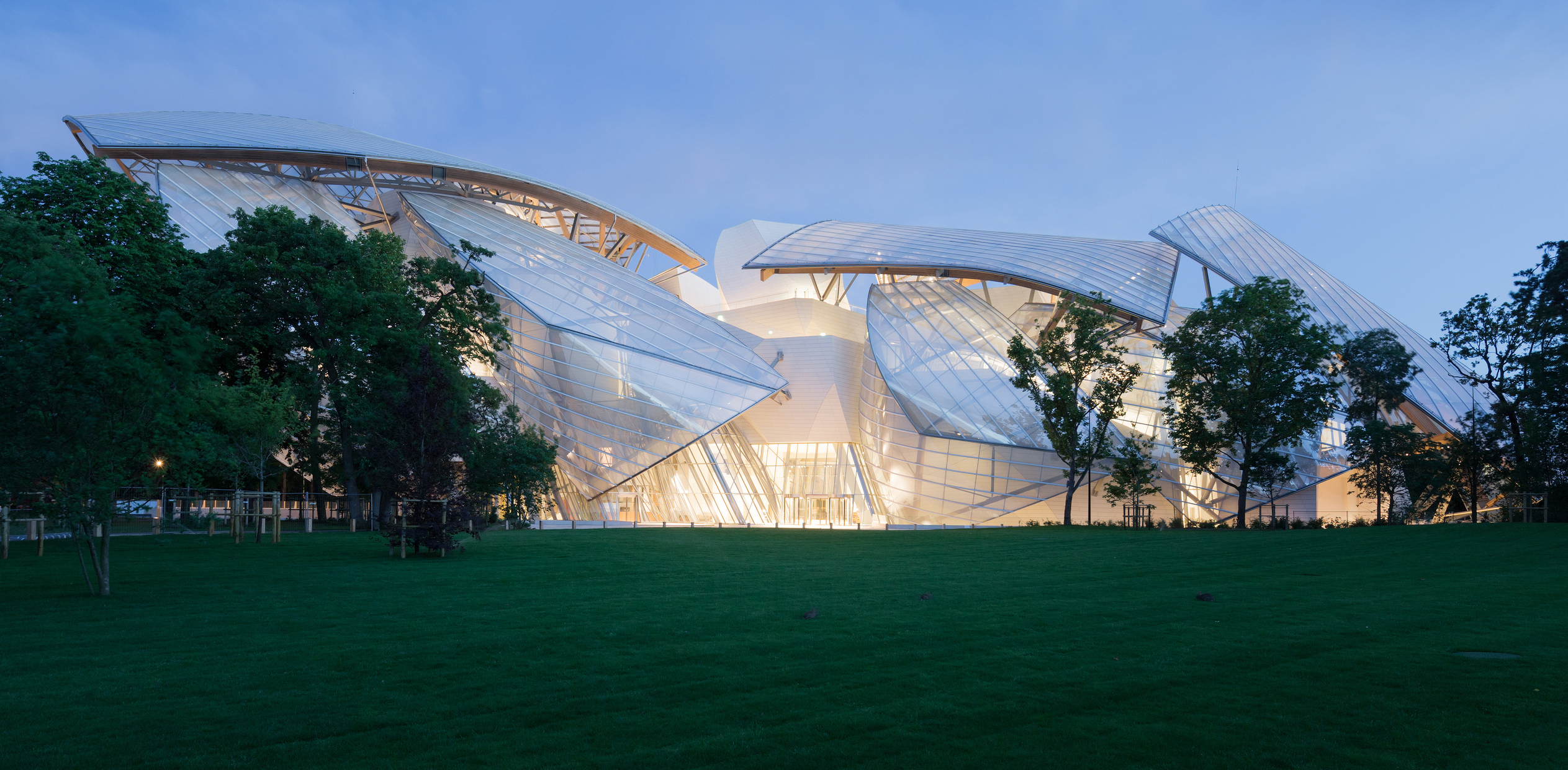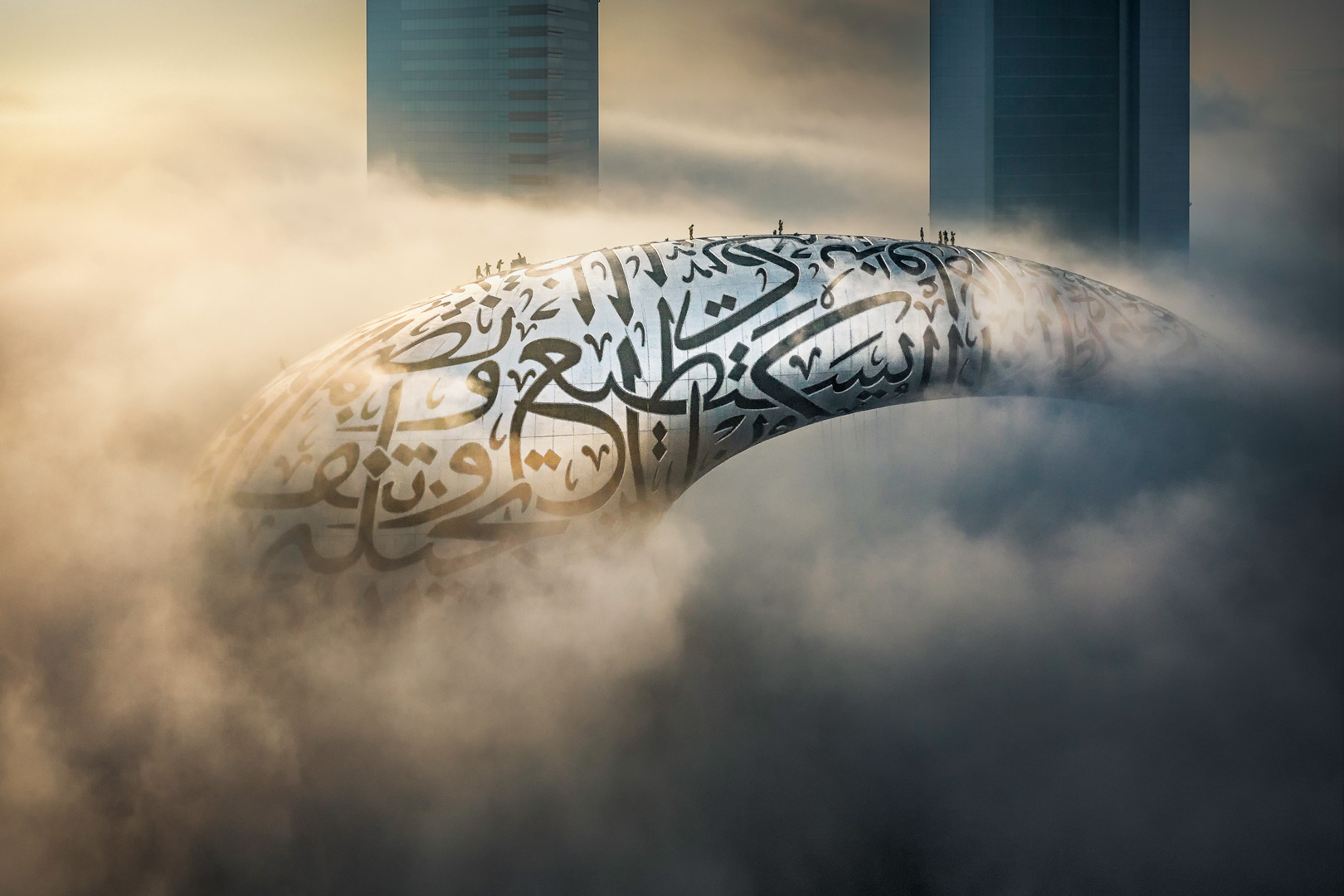Glistening in the late afternoon light, an architectural vessel floats amidst a sea of leaves, its translucent sails reflected in a pool of crystal water. Interior lights that begin to glow as the sun sinks in the evening sky.
This will be the scene that welcomes the world’s best architects, designers and other esteemed invitees as they make their way through the Bois de Boulogne to attend Architizer’s A+Awards Gala in Paris this October. Taking place at the Frank Gehry-designed Fondation Louis Vuitton and hosted in partnership with Material Bank, the event will form a vibrant celebration of innovation, with A+Award Winners from around the globe coming together to recognize the power of good design and its positive impact on society.

Vue aérienne du bâtiment de la Fondation Louis Vuitton; © Gehry Partners, LLP and Frank O. Gehry; photo by Iwan Baan, 2014
The setting couldn’t be more fitting. Completed in 2014, Gehry’s landmark building is undoubtedly an architectural icon, but manages to retain a reference for both its site in the heart of Paris’s beloved park and for the city as a whole. This is what the A+Awards are all about: Celebrating architects who are able to strike a balance between awe and sensitivity, between flare and finesse, between epic structures and carefully considered details. With the 12th A+Awards now open for entries, Gehry’s Fondation is set to provide ample inspiration for this year’s participants.
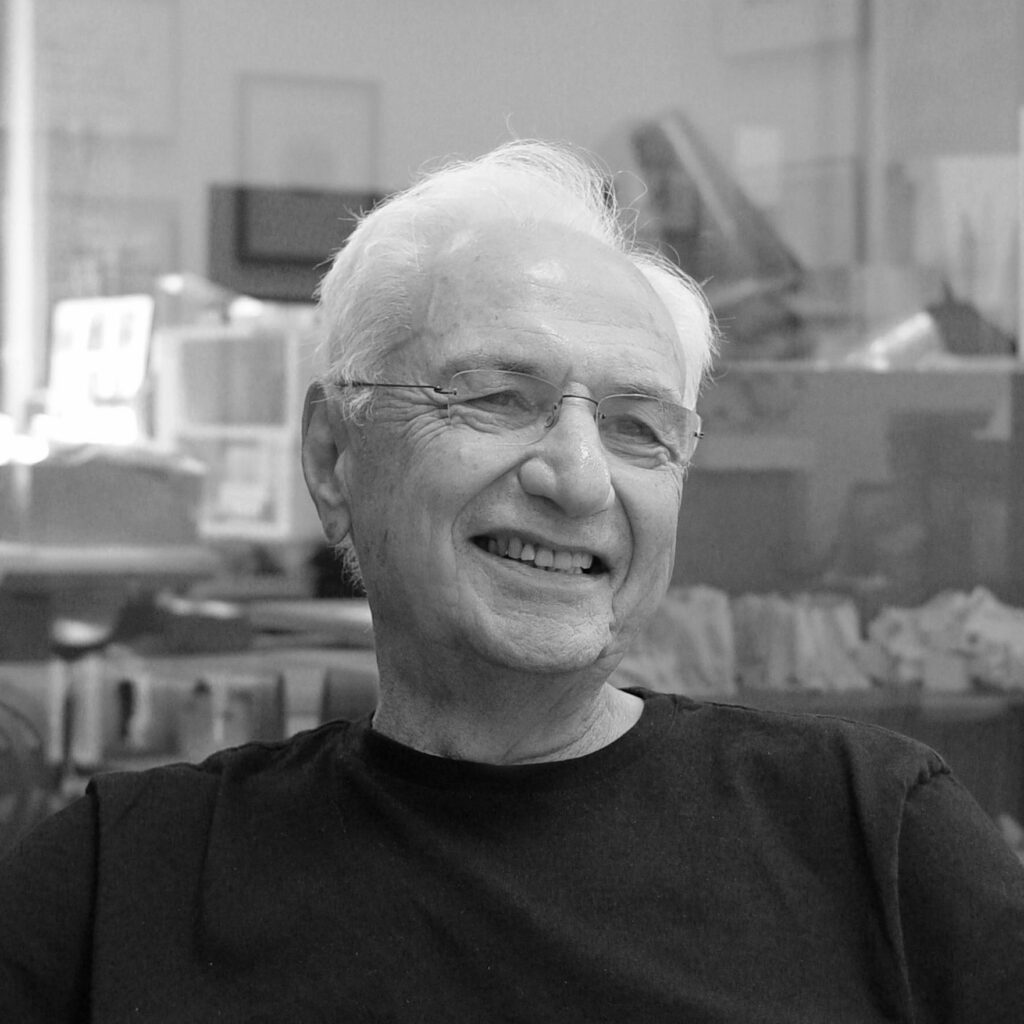
Frank Gehry; photo courtesy Gehry Partners, LLP © Alexandra Cabric
In an exclusive interview, Architizer’s Paul Keskeys spoke with Frank O. Gehry about this seminal project, the challenges in bringing it to fruition, and its architectural legacy.
Paul Keskeys: Architizer’s A+Awards gala will take place at Fondation Louis Vuitton on October 20 this year, on the ninth anniversary of the building’s 2014 opening. Reflecting back, how do you feel about the project and where does it sit for you in the context of your wider work?
Frank Gehry: I’m very pleased with the building. It was a dream to build a building in that location. When I walked the site for the first time, I cried imagining the history of the Jardin de Climitation. Proust certainly walked through the garden, among all the other literary greats. Respecting that history was very important to me. I hope that I have made the city of Paris proud of the building.
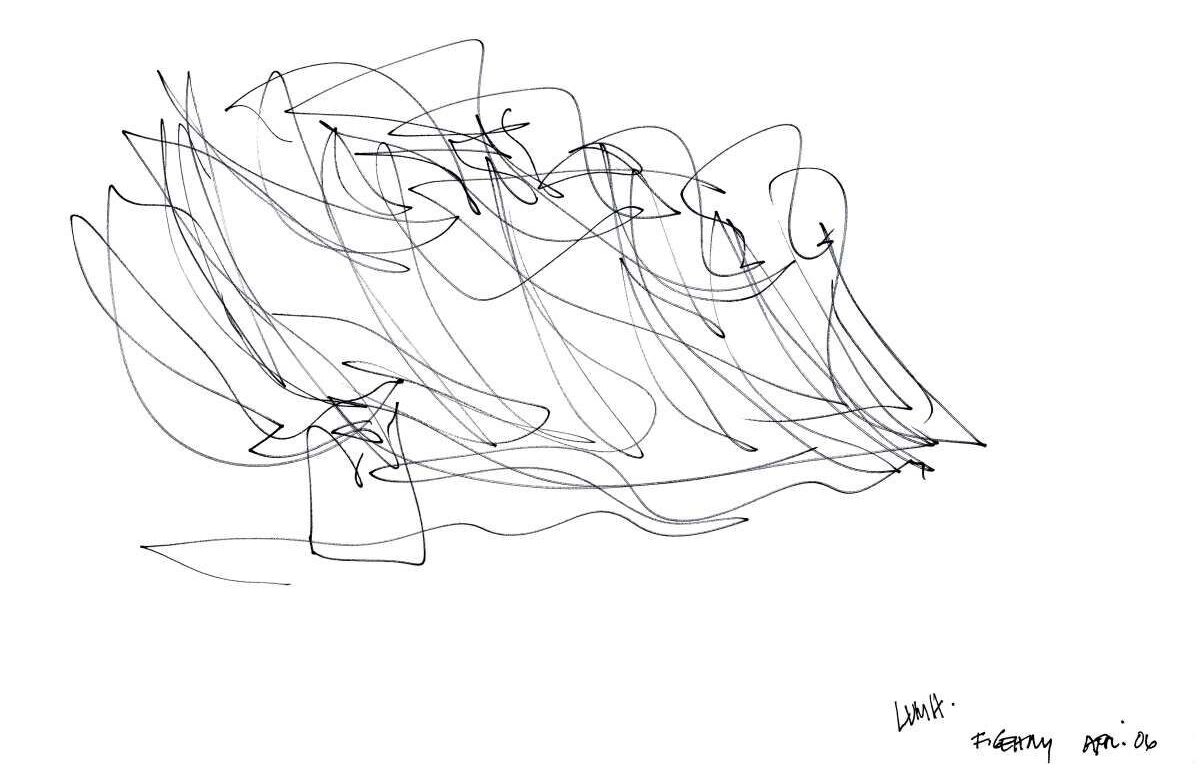
Early conceptual sketch by Gehry, 2006 © Frank O. Gehry
Your early sketch for the building remains an iconic example of creative conception. What was your inspiration for this drawing, and how do you feel it translated into built reality?
Our process starts with a very detailed deep-dive into the client’s space needs, their budget and the zoning constraints of the site. We build a lot of basic block models exploring the three-dimensional functional diagram of the building. This makes it easy for the client to engage with the project and to give feedback to help drive design decisions. My sketches don’t come out of thin air. They come after we have decided on a general massing, and after a lot of conversation with the client about their aspirations.
For this building, I knew that we needed to make a statement in the jardin but one that was respectful to the history of the site. We were looking at garden pavilions and glass conservatories from the 19th century. The glass sails emerged in my mind as a regatta sailing through the Bois de Bologne. The sketch is trying to capture that energy.
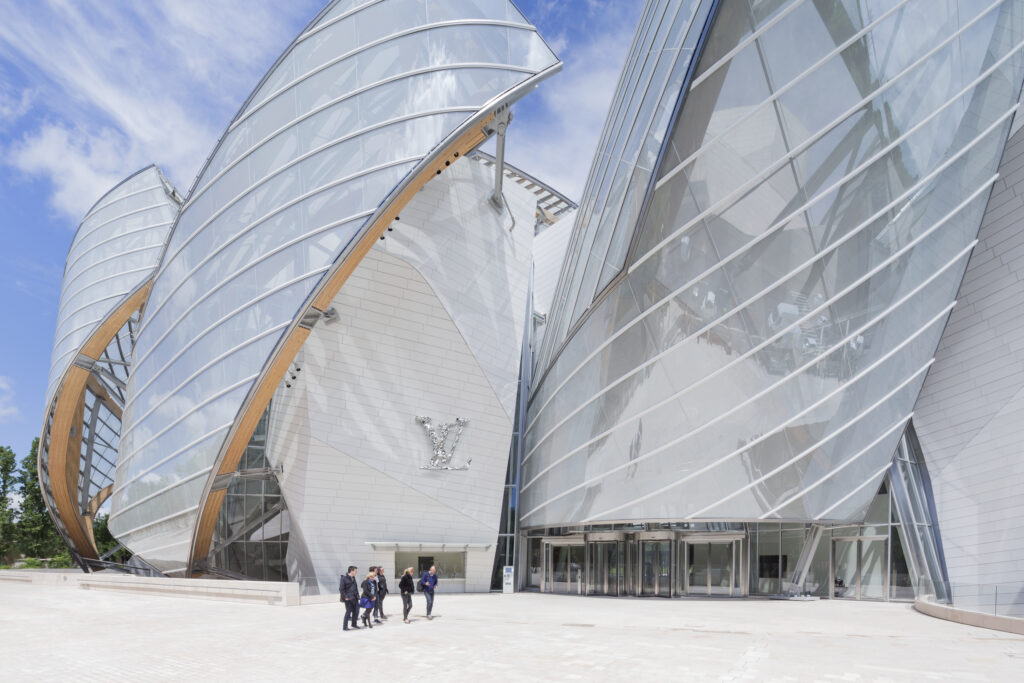
Vue du bâtiment de la Fondation Louis Vuitton (façade sud) et de l’entrée Bois de Boulogne; © Gehry Partners, LLP and Frank O. Gehry; photo by Iwan Baan, 2014
What do you think was the singular most successful element of the project from a design standpoint?
That it works for the client and that they are happy with how it functions. We designed the galleries to be flexible and that has allowed them to exhibit all ranges of work — from experimental digital art to the masters of Impressionism to contemporary African to Charlotte Perriand — and it all works.
I get a lot of nice notes from people who visit it. At the inauguration of the building, the president of France said that the building was a nod to both the past and the future and was a welcome addition to Paris, so that felt good.
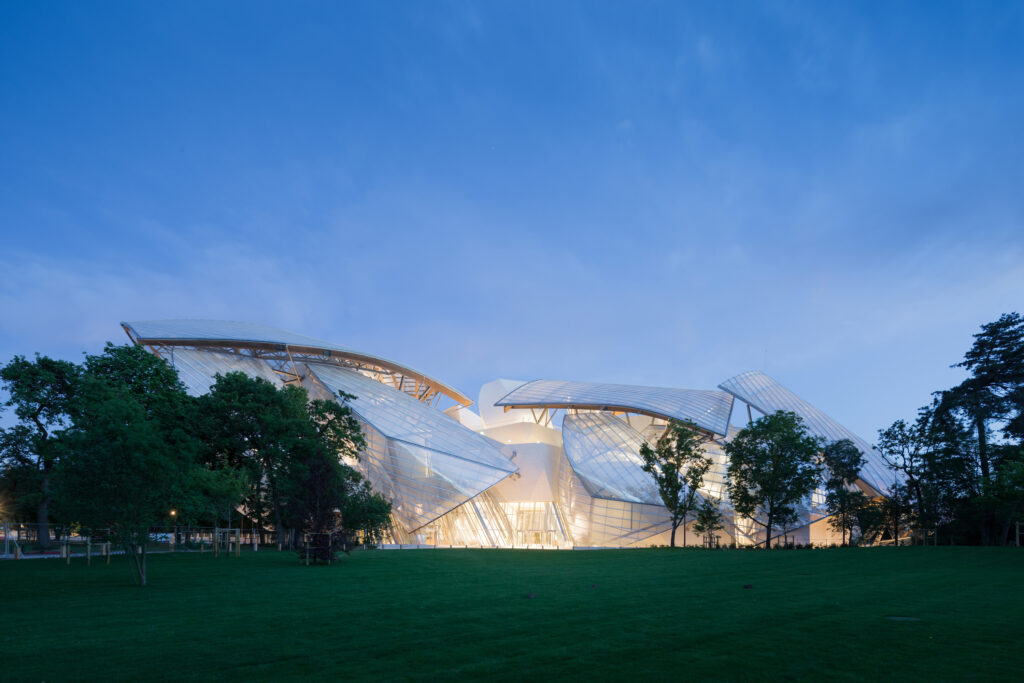
Vue générale du bâtiment de la Fondation Louis Vuitton (façade nord) depuis le Jardin d’Acclimatation; © Gehry Partners, LLP and Frank O. Gehry; photo by Iwan Baan, 2014
What kind of legacy do you feel the building leaves for the architecture profession, particularly for those designing contemporary cultural projects?
Legacy is best left to others to determine. Time is the ultimate arbiter of success. I just try to do my best on every project that I work on. It means listening a lot — to the client, to the artists, to the consultants, to my team, etc. — and it means engaging with the topic and being curious about the activities that will be taking place in the building.
If you could give one piece of advice to the next generation of architects, what would it be?
Be curious and work hard. Whatever you do, do your very best at it.
Architizer is thrilled to reveal the 12th Annual A+Awards Finalists. See which projects and firms made the cut and have your say in who wins a coveted Popular Choice A+Award. Cast your vote today >
